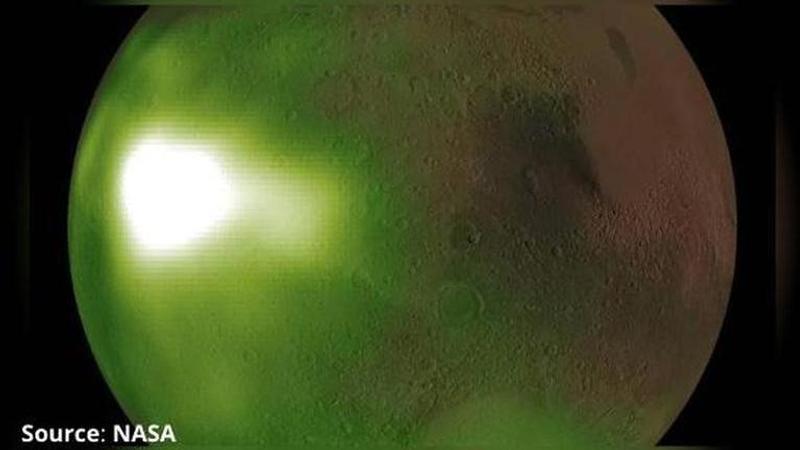Published 23:40 IST, August 7th 2020
NASA's MAVEN Spacecraft captures breathtaking pictures of Mars' Night Sky, See
NASA's Mars Atmosphere and Volatile Evolution spacecraft has snapped stunning pictures of the Martian Night Sky, illuminated by ultra-violet lights. See

According to NASA, the Mars Atmosphere and Volatile Evolution team were also known as the MAVEN team, was stunned when they saw that the Martian atmosphere was pulsing exactly, three times per night. So far this peculiar phenomenon only occurred during Mars’ spring and fall seasons. NASA has claimed that the new data collected by MAVEN also showed unexpected waves and spirals over the Mars’ winter poles. MAVEN observed that this stunning phenomenon was more pronounced and brightest over the winter polar regions.
NASA’s MAVEN observes ultraviolet light in Mars’ Atmosphere
According to NASA, Nick Schneider, from the University of Colorado's Laboratory for Atmospheric and Space Physics also known as LASP, in Boulder, Colorado revealed that these MAVEN images offer first global insights into atmospheric motions in Mars. This time MAVEN particularly captured these motions in Mars’ middle atmosphere, which is a critical region for air currents which carry gases between the lowest and highest layers. As per the pictures snapped by MAVEN, the ultraviolet brightening occurs where vertical winds carry gases down to regions of higher density.
Source: NASA
This movement speeds up the chemical reactions that create nitric oxide and power the ultraviolet glow. NASA’s official website revealed that Nick Schneider is the instrument lead for the MAVEN Imaging Ultraviolet Spectrograph (IUVS) instrument. The IUVS was the instrument that made these stunning observations. Schneider is also the lead author of a paper on this research appearing August 6 in the Journal of Geophysical Research, Space Physics.
Source: NASA
What do we know about Ultraviolet light?
Ultraviolet light is invisible to the human eye but it is detectable by specialised instruments. NASA’s official website mentioned that the ultraviolet glow comes mostly from an altitude of about 70 kilometres or approximately 40 miles, the brightest spot is about a thousand kilometres or approximately 600 miles across. According to NASA, these ultraviolet rays are like Earth’s northern lights.
Will NASA Astronauts who go to Mars in future be able to see it?
According to NASA, the composition of Mars’ atmosphere won’t let these bright spots emit light at visible wavelengths. Hence, future NASA Astronauts arriving at Mars won’t be able to see it. The bright patches would intensify overhead every night after sunset, and drift across the sky at 300 kilometres per hour or about 180 miles per hour.
Updated 23:41 IST, August 7th 2020





